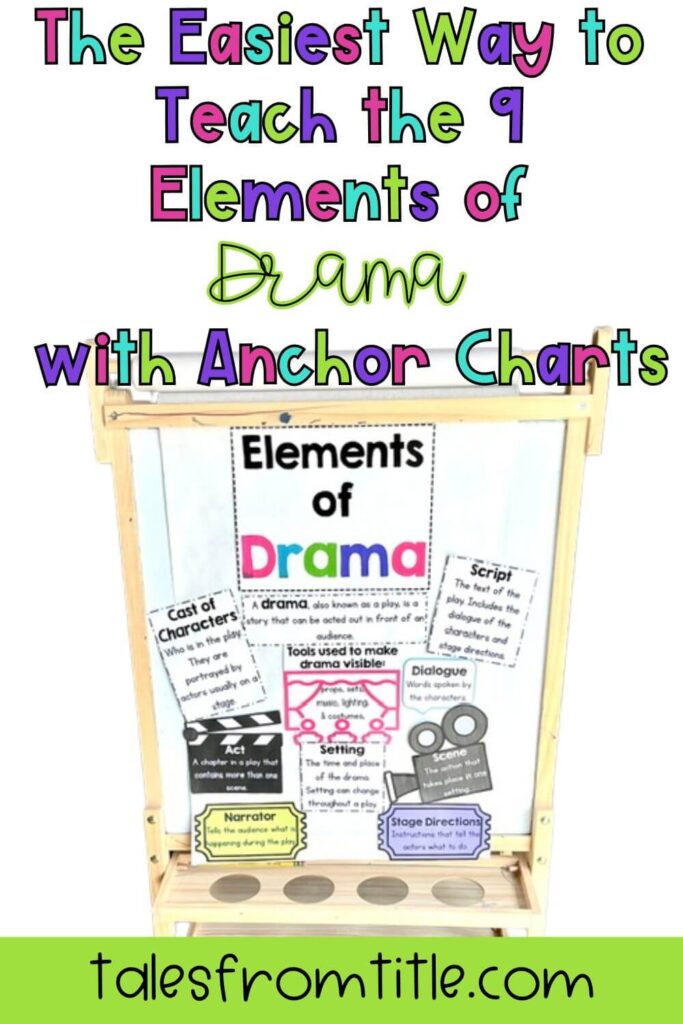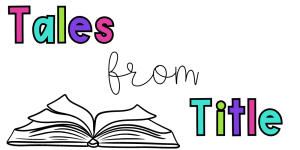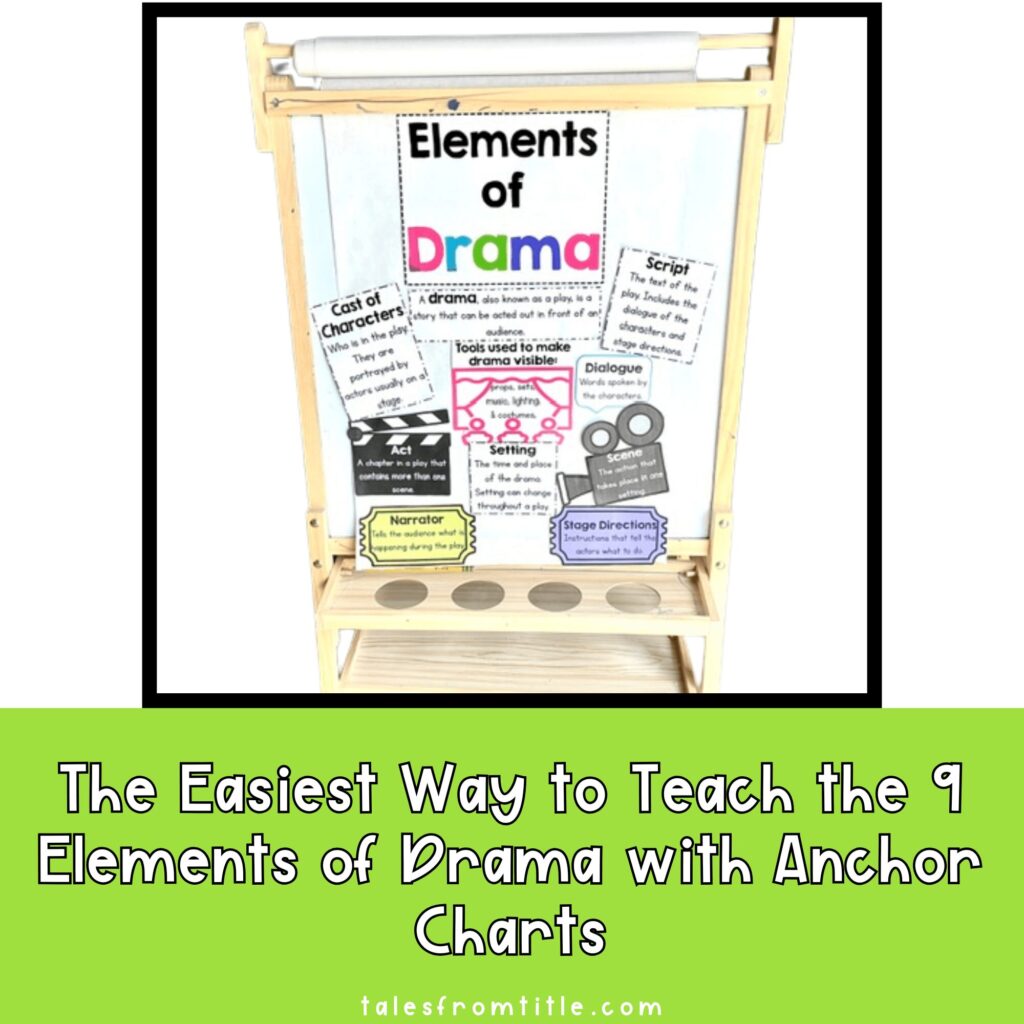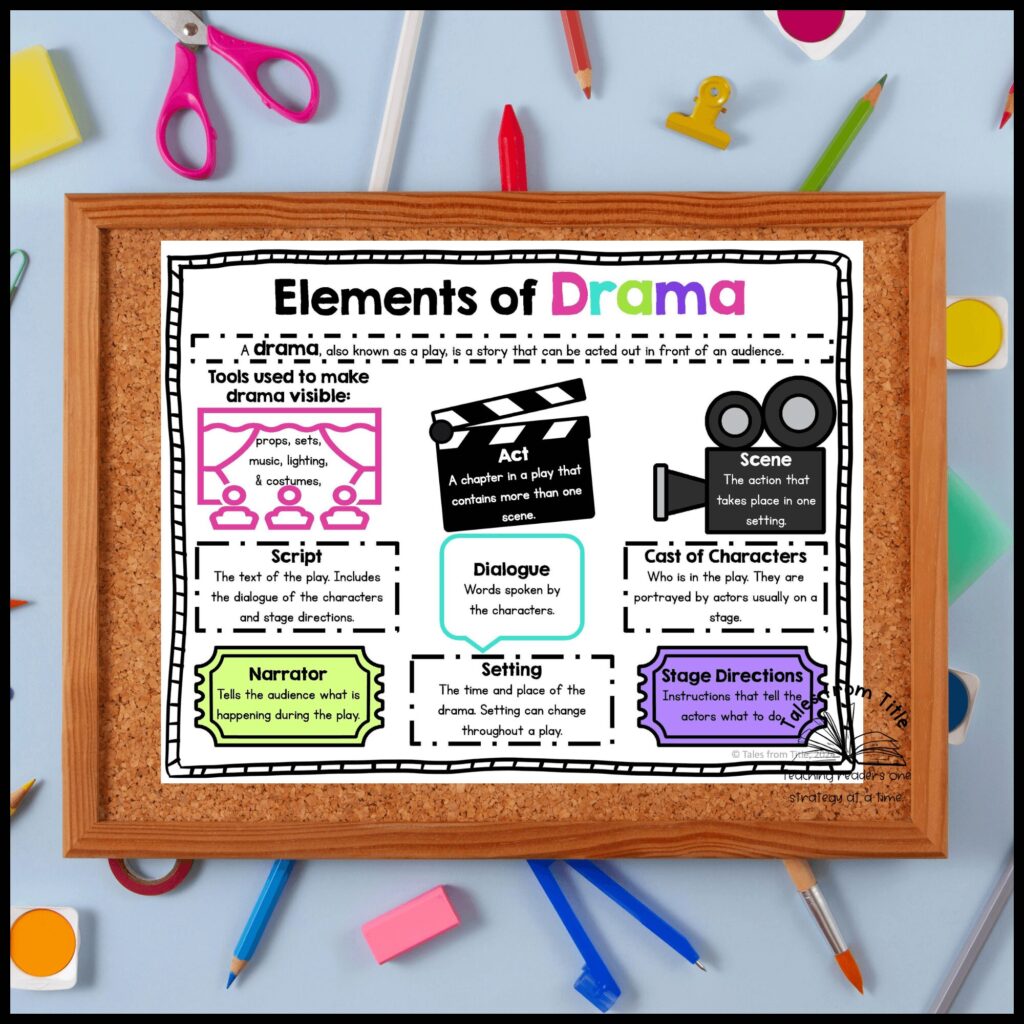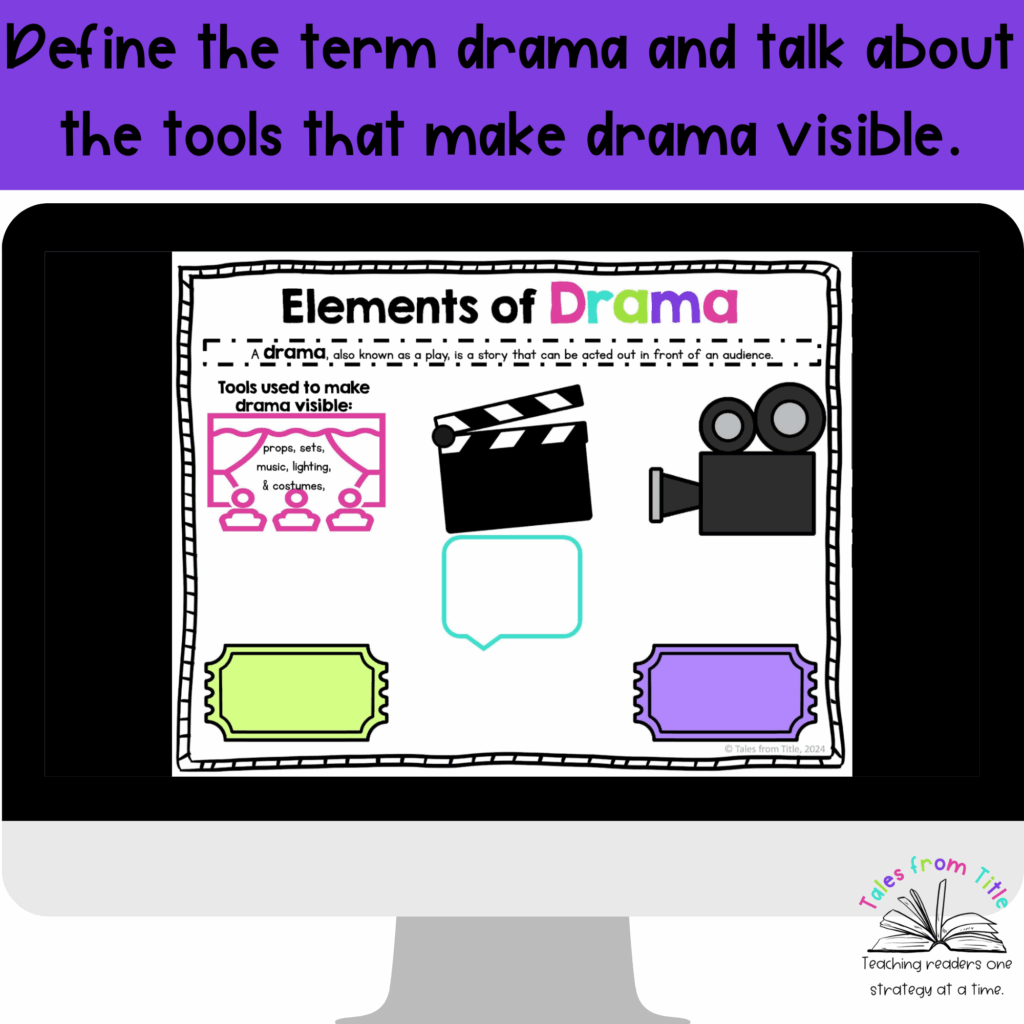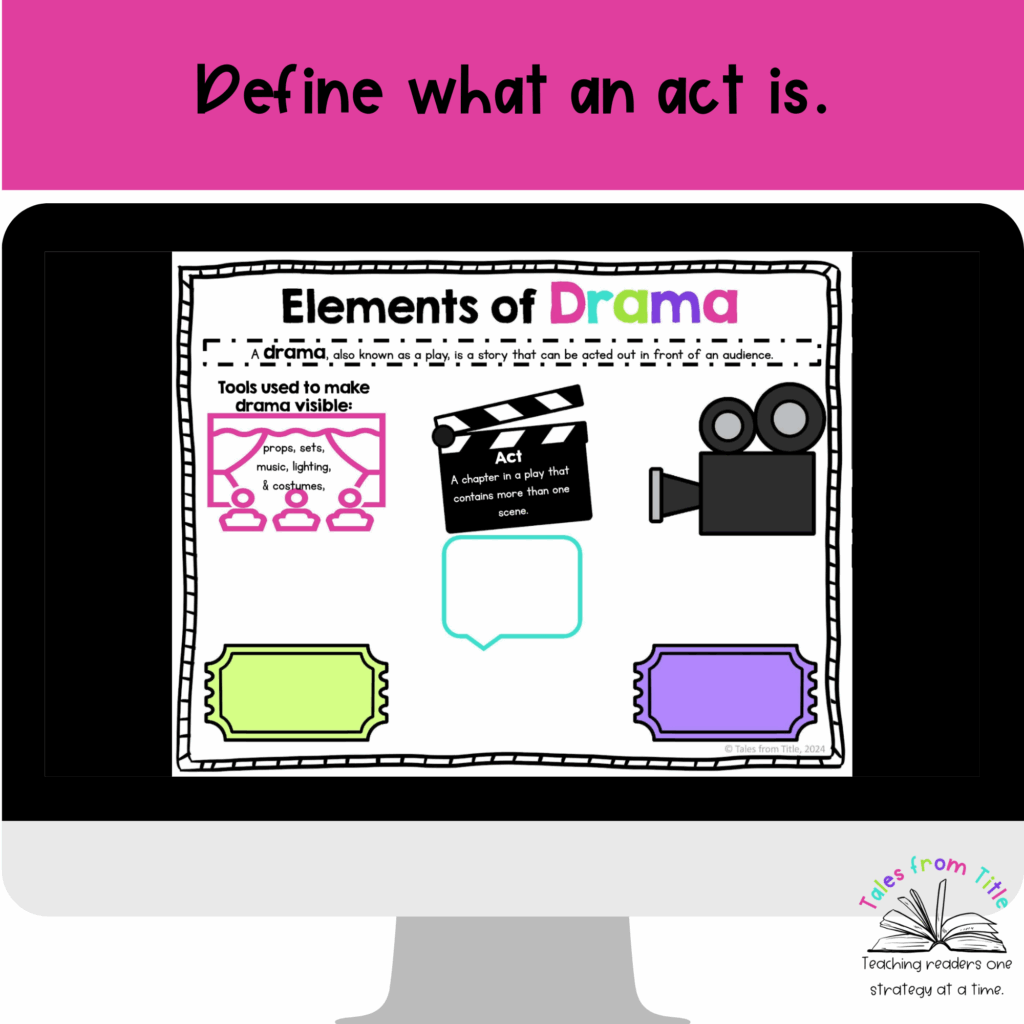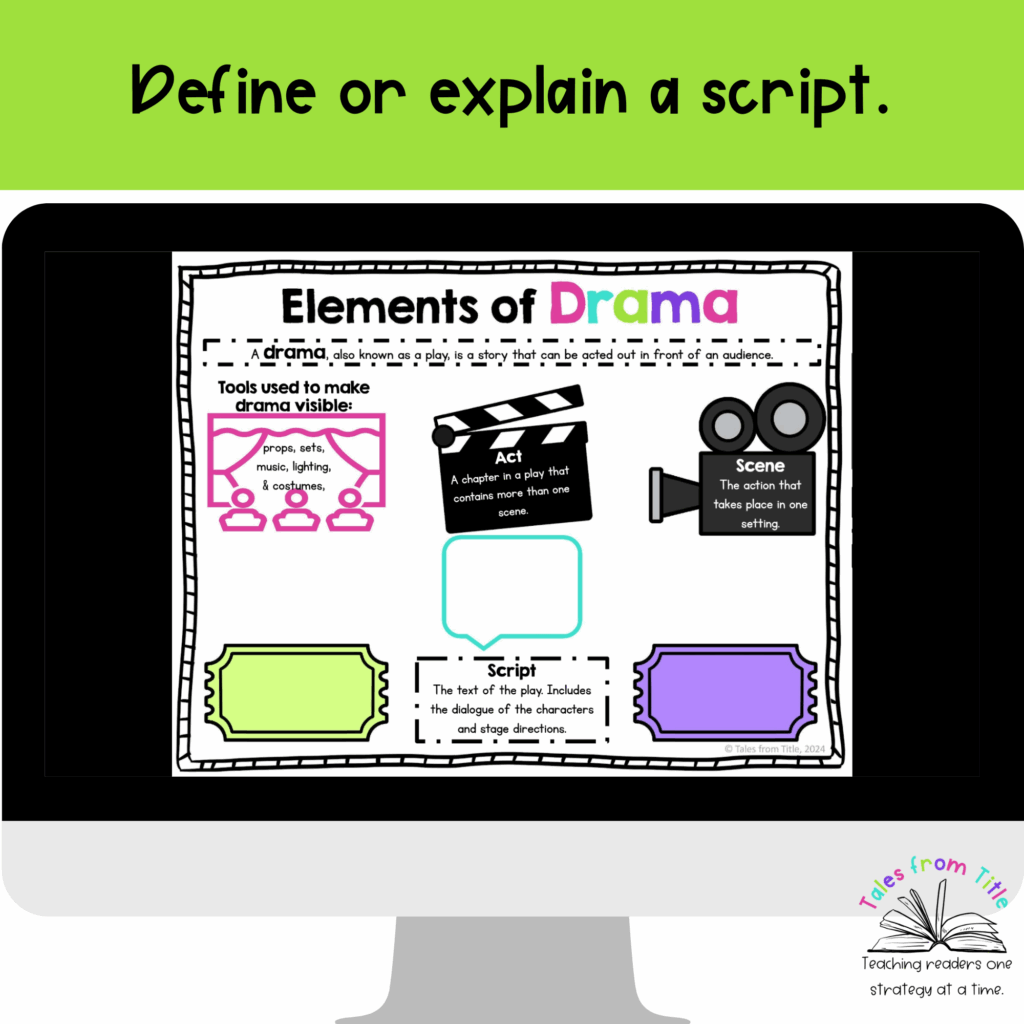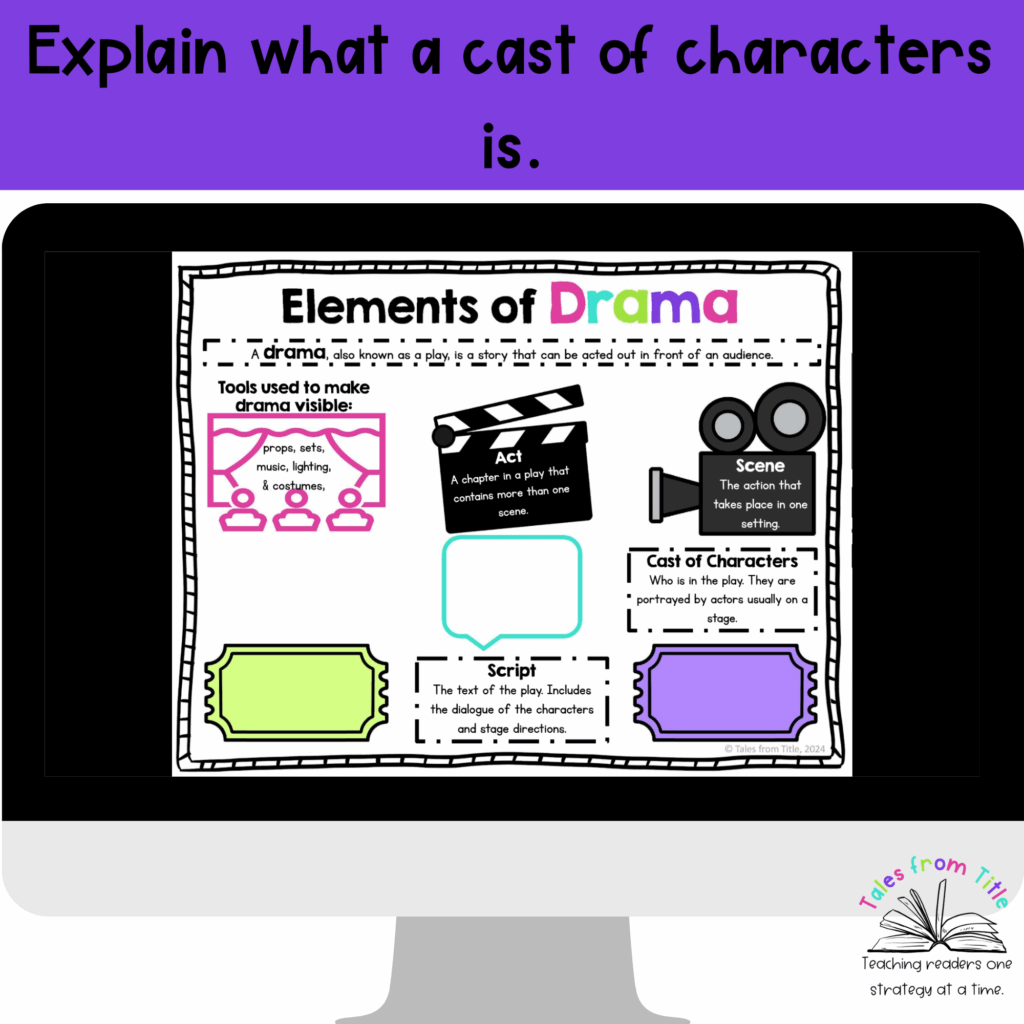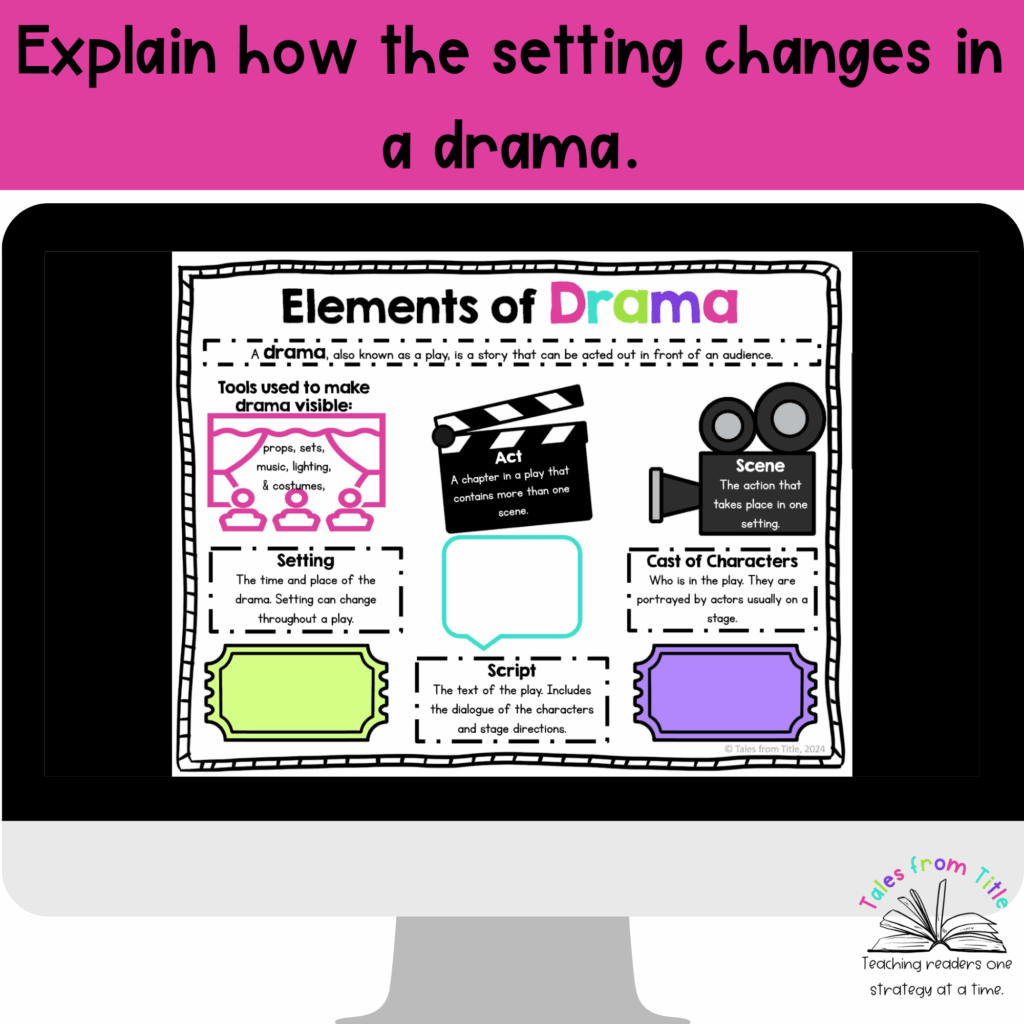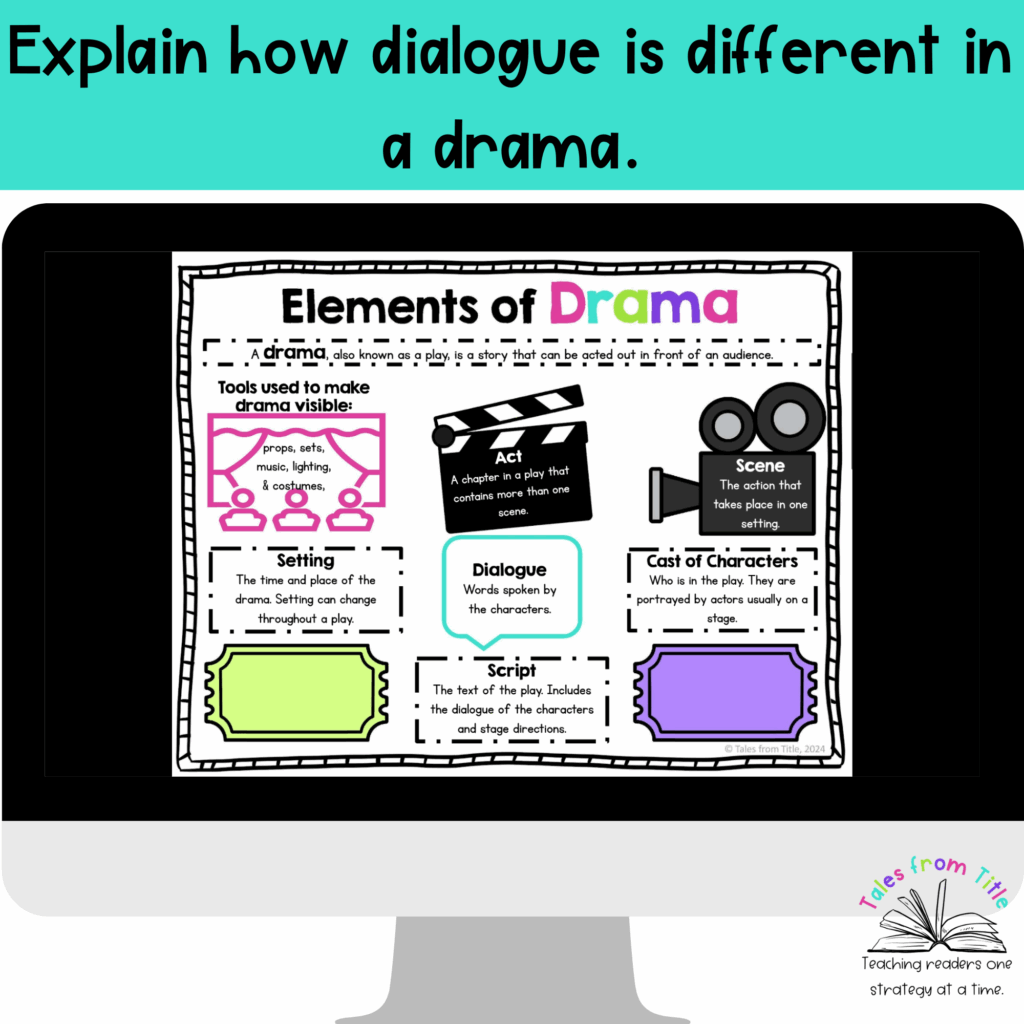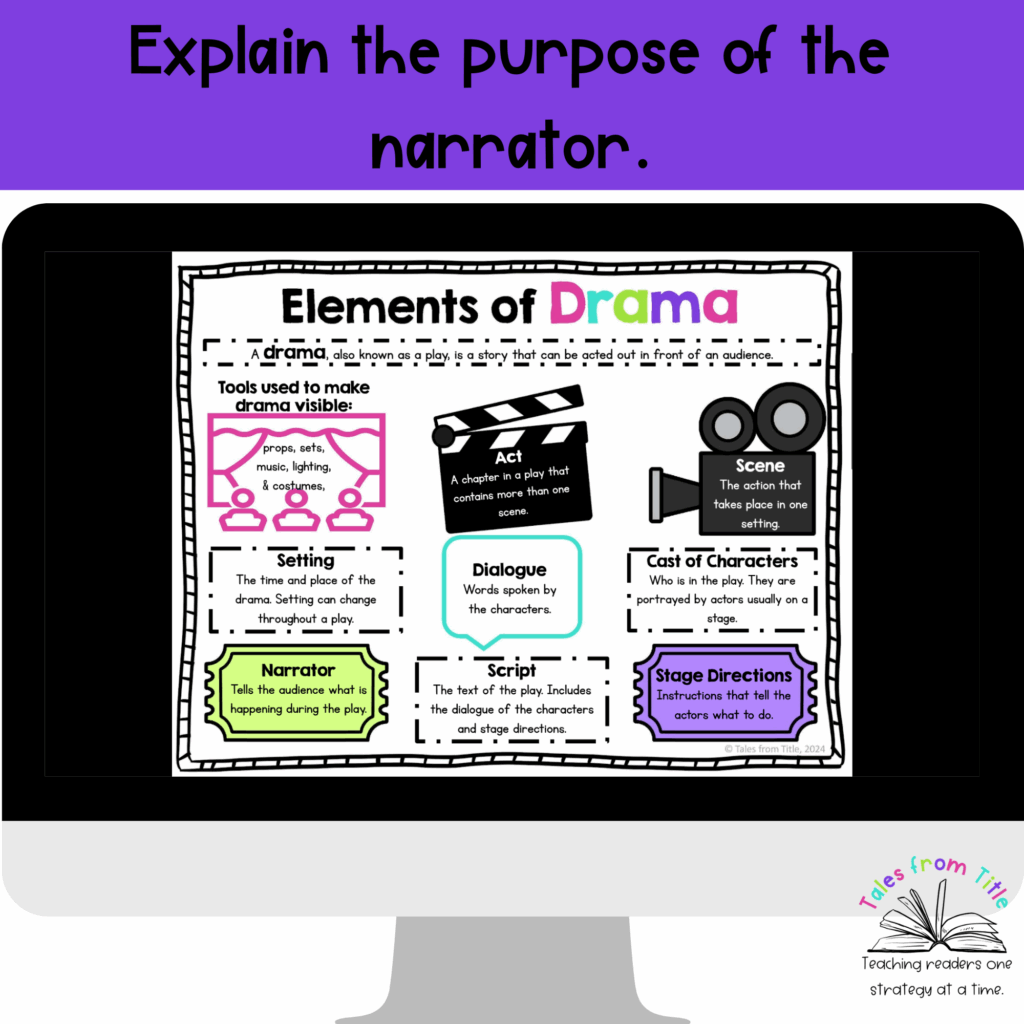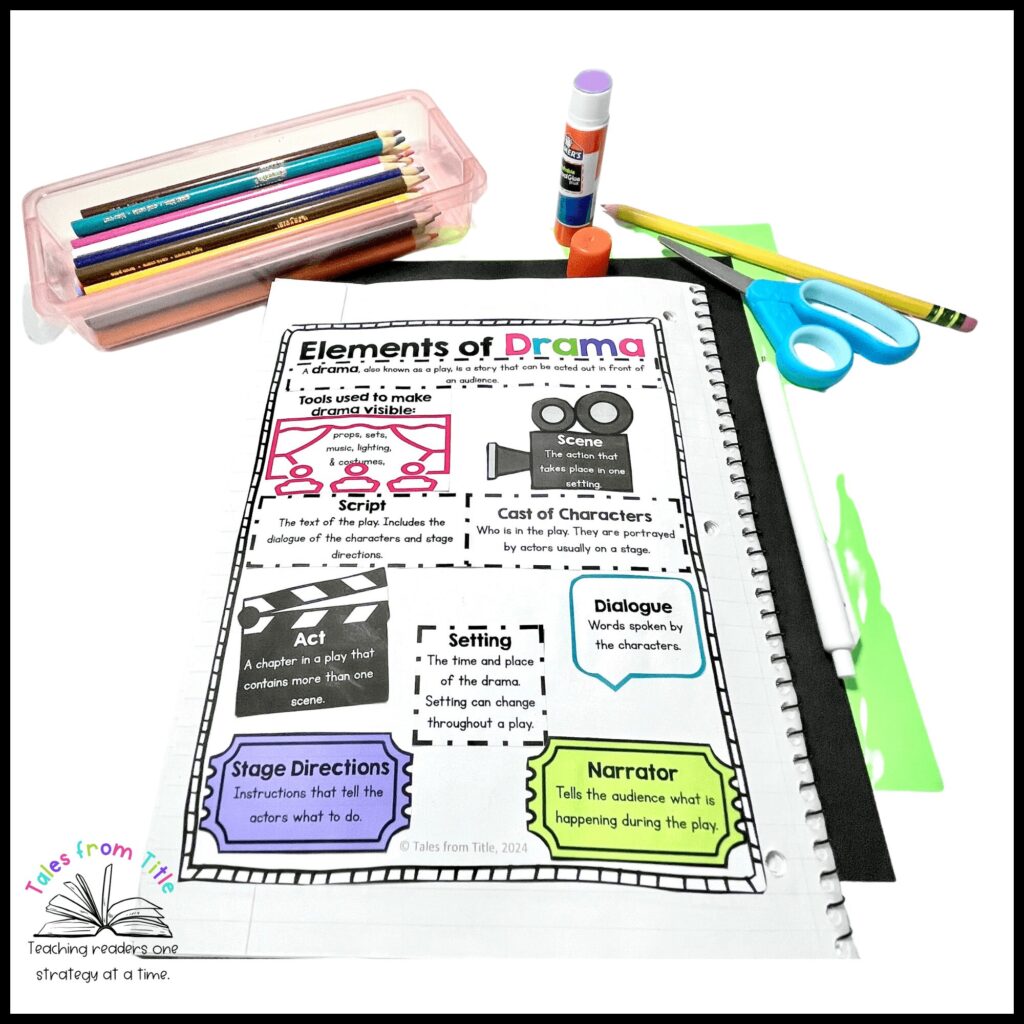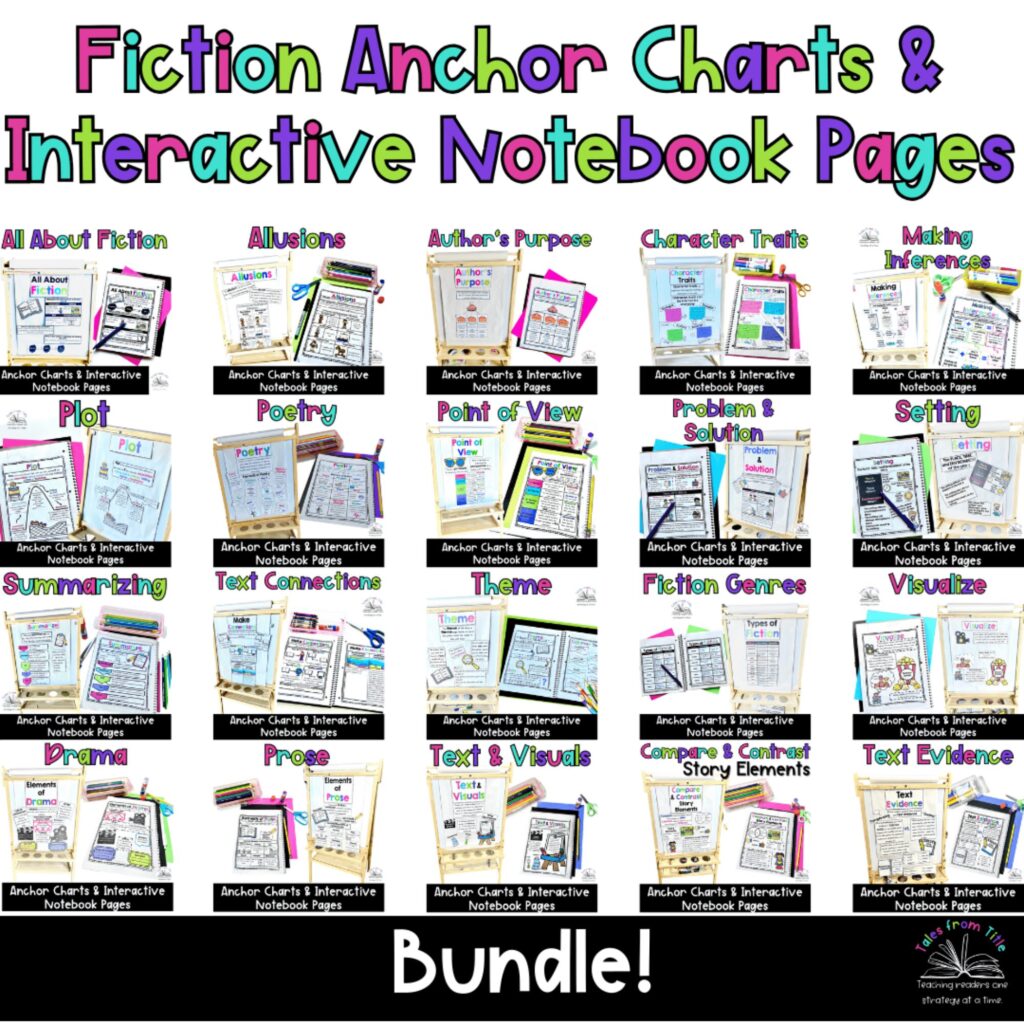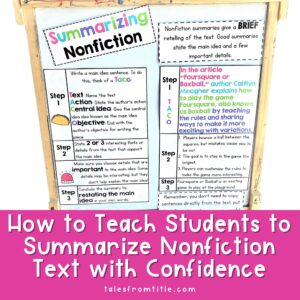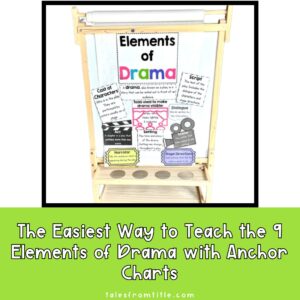Are you looking for a stress-free way to teach the elements of drama in your upper elementary classroom? Many teachers struggle to find time to create engaging visuals that actually stick with students, especially when it comes to genres like drama, which can feel unfamiliar to students who are used to reading prose.
In this post, I’ll walk you through exactly how to introduce the elements of drama to your students using a clear, student-friendly anchor chart and a lesson plan that encourages active participation. Even better? I’ve got a done-for-you resource that will save you time while keeping your instruction impactful.
What Makes Drama Different from Other Fiction?
Drama, or a play, is a form of fiction written to be performed. Unlike narrative fiction, dramas have unique structural elements and require a different approach to reading comprehension. Students need to understand not just what is happening in the story—but how it’s being told through scripts, stage directions, and live performance cues.
Unfortunately, many students (and even teachers!) don’t encounter drama texts often enough to feel confident with them. I personally find dramas cumbersome to read and avoid them (with the exception of the time I read Harry Potter and the Cursed Child). That’s why having a dedicated anchor chart to refer to can make a huge difference. It provides students with a visual reminder of the structure and vocabulary used in plays.
The 9 Essential Elements of Drama Students Need to Know
Here’s what I include in my Elements of Drama Anchor Chart and how I introduce each one through whole-group instruction:
1. Tools to Make Drama Visible
Props, sets, music, lighting, and costumes bring a drama to life. I explain that these tools help the audience see the story unfold, something that sets drama apart from reading silently.
2. Act
Think of an act as a chapter in a play. It’s a big section of the performance and often includes multiple scenes.
3. Scene
A smaller section within an act, defined by a specific time and place. I make the connection to setting changes in narrative fiction.
4. Script
The written text of the play. Scripts include dialogue, stage directions, and character names.
5. Cast of Characters
A list of who appears in the play. We use this to assign roles when we read dramas aloud in class.
6. Setting
The time and place of the story, just like in a novel, but often changing across scenes.
7. Dialogue
The words spoken by characters. Unlike prose, dialogue in drama appears after a character’s name rather than in quotation marks.
8. Stage Directions
Instructions (usually in parentheses) that tell actors how to move or speak. I emphasize that these aren’t meant to be read aloud.
9. Narrator
A voice that helps explain what’s happening, often between scenes. The narrator isn’t a visible character but guides the audience’s understanding.
Why Anchor Charts Work (Even When They’re Covered Up!)
One of the most powerful moments I’ve had as a teacher is watching students glance toward an anchor chart’s empty space during testing. Even when the visual was no longer there, the memory of it helped students recall key terms and concepts. That’s the magic of anchoring learning visually and spatially.
Ready-to-Use Resource: Save Time Without Sacrificing Quality
If you don’t have the time (or desire) to hand-draw your own chart, the Elements of Drama Anchor Charts & Interactive Notebook resource is a perfect solution. It includes:
✅ Color and black-and-white chart options
✅ Portrait and landscape orientation to fit your classroom space
✅ Interactive notebook versions (typed or fill-in-the-blank options)
✅ Digital Google Slides versions for in-person or virtual use
✅ Teaching notes and a clear script for introducing each element
Students can interact with the anchor chart through cut-and-paste activities, note-taking, or digital manipulation—whatever best fits your teaching style.
Try the Lesson Plan: No Prep, All Impact
Not sure where to begin? A lesson plan script is included in the resource and provides you with word-for-word guidance to introduce each element. It builds the anchor chart in real-time as you teach, helping students make meaningful connections and take ownership of their learning.
A Tool Students Will Use All Year Long
Whether you’re reading a one-act play, preparing for testing season, or performing a reader’s theater, having a solid grasp on the elements of drama is key.
Want the best deal? Get 20 fiction anchor charts for the price of 16 when you grab the full bundle!
